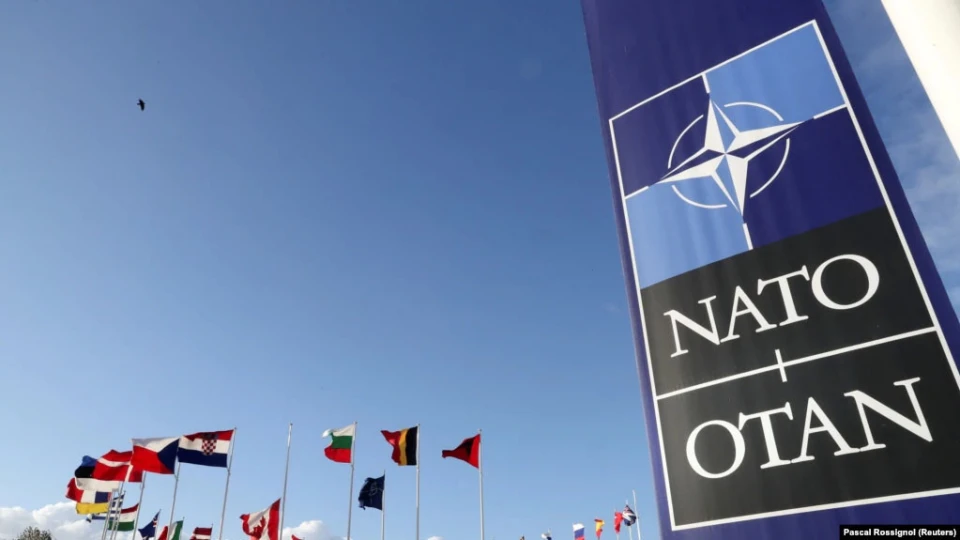
Ukraine's NATO membership: prospects and challenges two years into full-scale war
Ukraine: De Facto Aligned with NATO through Western support and democratic ideals, yet formal membership awaits a resolution to this war. Why this disconnect?
What the article is about:
- The history of relations between Ukraine and NATO: from its inception to 2014
- How the war changed the government and society's attitude to joining the Alliance
- Training, weapons and NATO standards
- When Ukraine will become a member of the Alliance
The history of relations between Ukraine and NATO: from inception to 2014
NATO (North Atlantic Treaty Organization) emerged in 1949 in response to the threat posed by the growing influence of the USSR in Europe after World War II. The newly established United Nations Organization demonstrated from its early years that it was not capable of ensuring peace militarily, so Western democracies began searching for a separate institution to protect their borders. Moreover, in 1949, the Soviet Union successfully tested a nuclear bomb, which at that time was only available to the USA. Consequently, Western countries needed a nuclear umbrella that Americans could provide them.
An interesting historical fact: even before declaring independence, the Ukrainian Soviet Socialist Republic also attempted to join NATO in 1954. At that time, the leadership of the USSR contemplated a "Trojan horse" tactic to become part of the organization and block its activities from within. The idea was advantageous regardless of the outcome: if not accepted, it would signify a hostile environment, and if accepted, it would provide additional influence. On March 31, 1954, the USSR sent requests to Western countries for admission to NATO. Simultaneously, but separately, the formal founding member countries of the UN - the Belarusian and Ukrainian SSRs - also submitted applications. However, on May 7, 1954, the Alliance responded with a rejection.
Before the declaration of independent Ukraine in 1991, the communist authorities imposed various myths about NATO on society, demonizing it as a military bloc whose goal was to destroy the USSR. Consequently, in the public opinion of post-Soviet Ukraine, the majority of the population associated the Alliance with something negative, forgetting that NATO was created for defense, not aggression. Moreover, the Russian authorities, which continued to have significant influence in Ukraine through the fifth column, continued to propagate their narratives about the Alliance. Accordingly, the Ukrainian government was forced to balance, sometimes speaking about the country's non-alignment, and sometimes about the distant prospect of NATO membership. Similarly, there was no unanimity within the Alliance itself, as some Western politicians both feared and continue to fear "angering Russia" by allowing Ukraine to become a member of the bloc.
Nevertheless, Kyiv made every effort not to lose the chance to have good relations with NATO. The history of Ukraine's integration into NATO began in the early 1990s. In 1992, Ukraine joined the Euro-Atlantic Partnership Council. However, this format of relations did not entail the integration of states into NATO, but rather political consultations.
In early 1994, U.S. President Bill Clinton presented the vision of the Partnership for Peace program at the NATO summit in Brussels. The idea was to involve the countries of the former Soviet Union and Eastern Europe in cooperation with NATO at various levels, such as joint military exercises. In the same year, Ukraine was one of the first post-Soviet states to sign a framework agreement with NATO under the Partnership for Peace initiative. This was the first step towards practical cooperation with NATO.
In 1996, Ukraine lost its nuclear status, giving up its third largest nuclear weapons arsenal. Therefore, the issue of security became increasingly important. President Leonid Kuchma generally supported the idea that Ukraine should become a member of NATO.
In 1997, an important document called the Charter on a Distinctive Partnership between NATO and Ukraine was signed.
"We were the first CIS state to dare to build our own relations with the Alliance without asking for permission from the Russian Federation. It was a real breakthrough, although the wording of the Charter on Partnership was still cautious and 'roundabout,'" wrote Leonid Kuchma about the day of signing this agreement in his memoirs.

Subsequently, cooperation between Ukraine and NATO intensified even further. Two NATO-Ukraine summits were held. In April 1999, a NATO mission was opened in Kyiv. And in 2000, for the first time in NATO's history, the annual meeting of NATO's main political body, the North Atlantic Council, was held outside of NATO member states in Kyiv. In 2001, the training center of the International Peacekeeping and Security Center was opened in Yavoriv, an important military base where Ukrainian soldiers could learn from NATO instructors.
In 2002, Kyiv adopted the so-called NATO-Ukraine Action Plan. President Kuchma openly stated that NATO membership was a priority task for Ukraine. It even reached the point where in the final months of his presidency, Kuchma, in the new edition of the Military Doctrine, approved provisions stating that the ultimate goal of cooperation with the Alliance should be the full integration of Ukraine into the bloc. However, just a month later, Kuchma backtracked and changed this provision to only "deepening relations." This was because his successor, whom he envisioned as Viktor Yanukovych, had a clearly pro-Russian stance, rather than a Western one. Nevertheless, another Viktor became president - Viktor Yushchenko, who was known for his pro-Western stance. Therefore, the provision regarding NATO membership returned to the Military Doctrine. Despite the efforts of the authorities, Ukraine was not made a member of the Alliance, as Western officials played their own game.
In addition to the Partnership for Peace for cooperation with Central and Eastern European countries, NATO created a new mechanism for accession to the Alliance, called the Membership Action Plan (MAP). This means that a country aspiring to join NATO must meet the criteria for allies to approve its future membership in the Alliance.
In 2008, at the NATO summit in Bucharest, Alliance countries discussed the possibility of granting Ukraine and Georgia a Membership Action Plan (MAP). However, at that time, the bloc leaders were blinded by promises and the initial hints of threats from Russian President Vladimir Putin. Therefore, they were unwilling to jeopardize their established mutually beneficial cooperation with Russia (including cheap gas and oil) in order to make Ukraine stronger. This was a serious political miscalculation that led to the strengthening of Russia's imperial ambitions.
Later, with the rise to power in Ukraine of the pro-Russian President Viktor Yanukovych, the question of NATO membership completely disappeared from the agenda. Moreover, there began a total dismantling of the army to appease Putin's plans.
How war changed the attitude of Ukrainian authorities and society to joining the Alliance
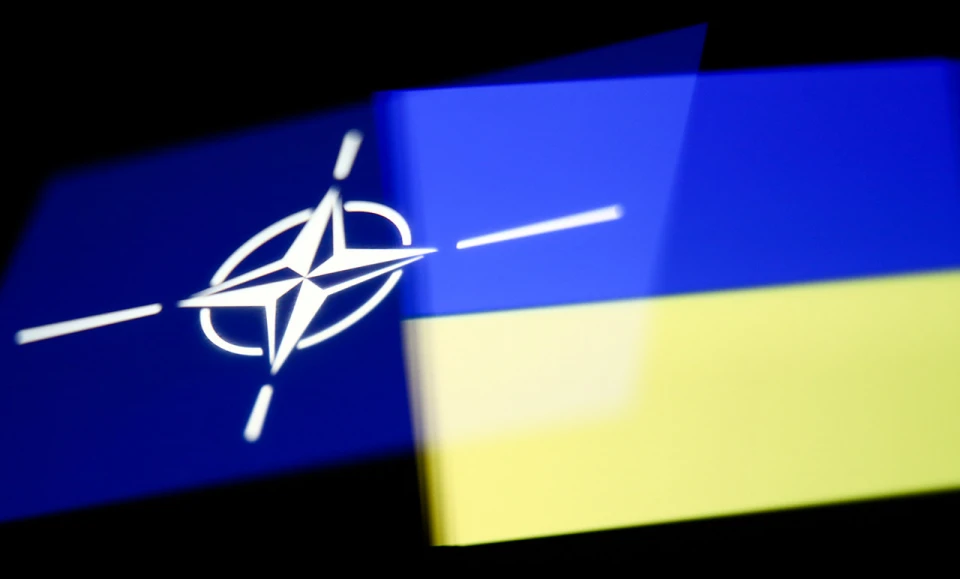
The Revolution of Dignity, Viktor Yanukovych's escape, the annexation of Crimea, the start of the war with Russia, and ultimately, full-scale warfare – all of these profoundly altered both the government's attitude and society's understanding of why Ukraine needs to become a member of a defense bloc, not only among Ukrainians but also among Western democracies.
On December 23, 2014, the Verkhovna Rada of Ukraine revoked Ukraine's non-aligned status. In 2015, a new version of Ukraine's Military Doctrine was published, stating that our country considers deepening cooperation with NATO and creating conditions for joining the bloc a priority task. This includes modernizing the army at all levels within NATO standards. Kyiv began transforming the Armed Forces from within to ensure there were no questions about our troops' readiness to join NATO. This led to intensified training, courses, and changes in military legislation.
In early 2018, NATO granted Ukraine the status of an aspirant country on the path to joining the Alliance. Although this was more of a symbolic step, less than a year before, significant changes were made to the Constitution of Ukraine. These changes included provisions regarding Ukraine's strategic course towards membership in the EU and NATO, which were enshrined in the preamble, three articles, and transitional provisions of the Constitution. Thus, at the legislative level, the government committed to striving for Ukraine to one day join NATO.
Great hopes were placed on the NATO Summit in 2021. By the spring of 2021, Russia began increasing its military presence on the border with Ukraine. There were expectations that Ukraine and Georgia would finally be given a Membership Action Plan (MAP). However, once again, the Alliance said the same thing as in 2008 – yes, Ukraine and Georgia will be in NATO through the MAP, and Russia cannot block this decision, but no timelines were given for when this would happen. Therefore, it was a political statement without real substance, designed to "not anger" Russia once again. Instead, such a decision only emboldened Putin.
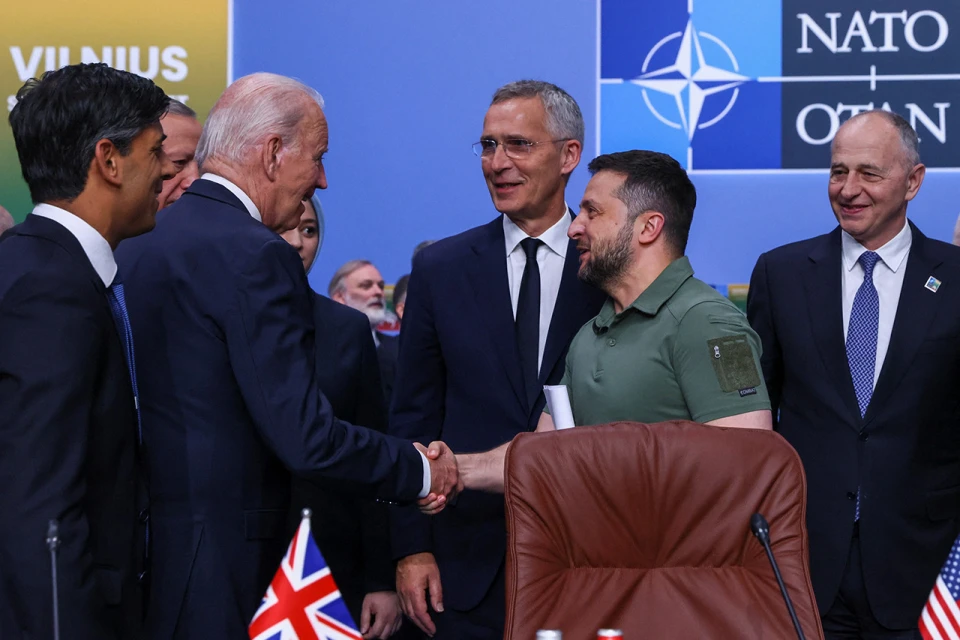
Undoubtedly, the full-scale war became the biggest catalyst for cooperation between Ukraine and NATO. The Alliance began supporting Kyiv not only politically but also with military equipment, ammunition, and expertise. In the fall of 2022, the Ukrainian government applied for accelerated NATO membership to bypass the MAP and expedite the process. Most NATO member countries supported this idea. Western politicians began to say that if Ukraine had been allowed to become a NATO member earlier, it might have been possible to avoid the war.
In 2023, at the NATO Summit in Vilnius, it was agreed that Ukraine would become a member of the bloc without a MAP. NATO Secretary General Jens Stoltenberg announced then that Ukraine would be invited when "all allies agree and conditions are met," although he couldn't explain what conditions exactly. However, President Biden's national security advisor, Jake Sullivan, acknowledged that Ukraine's accession to NATO would mean war between the Alliance and Russia, which the world does not want.
However, once again, at the summit, no specific timeline was set, despite President of Ukraine Volodymyr Zelensky's insistence. This led to the Office of the President seeking alternatives during the war – individual security agreements with allied countries.
Regarding public attitudes towards NATO membership, they have essentially evolved from almost non-existent in the early years of independence to nearly maximum support. However, tracking public sentiment on this issue began in the 2000s when the government openly discussed the desire for integration into NATO. The initial surveys showed that the majority of the population viewed the Alliance with hostility, as entrenched myths about the "hostile alliance" persisted in public opinion. Despite this, in 2002, 32% of citizens supported Ukraine's NATO membership, with an equal percentage opposed, and the rest unable to answer the question. Interestingly, in the following years, the number of NATO skeptics increased. This was attributed to the strengthening of pro-Russian forces within the country and the limited efforts by the government to inform the population about NATO. The peak of opposition to joining NATO was in 2006 and 2012 when over 60-65% of respondents were against NATO membership, with only about 15-20% in favor.
A dramatic shift followed in 2014 with the start of Russia's military aggression. Almost 50% of citizens supported the idea of joining the Alliance, while 33% were against it. In the following years, although the influence of pro-Russian forces through the controlled media grew again, the percentage of those who supported joining the Alliance consistently outnumbered those who were against it. In particular, before the outbreak of full-scale war, almost 50% of Ukrainians agreed that Ukraine should become a member of the Alliance, and only a quarter did not.
The full-scale attack by Russia on February 24, 2022, only increased the percentage of those in favor of joining NATO. According to sociologists, from May 2022 to May 2023, the percentage of Ukrainians wishing to join NATO increased from 73% to 89%, and the number of those expecting to join rose from about 65% to 85%. However, later on, societal interest in NATO somewhat waned, as the Alliance did not specify when Ukraine would become a member, and the war began to drag on, with some member countries hinting at "war fatigue." Therefore, by the end of November 2023, 77% of citizens would have voted to join NATO if such a referendum were held. Currently, the level of support for joining NATO remains approximately the same as it was at the beginning of the full-scale invasion. This means that over the two years of war, Ukrainians have clearly understood that a secure future for our country is possible through joining the Alliance.
Training, weapons and NATO standards
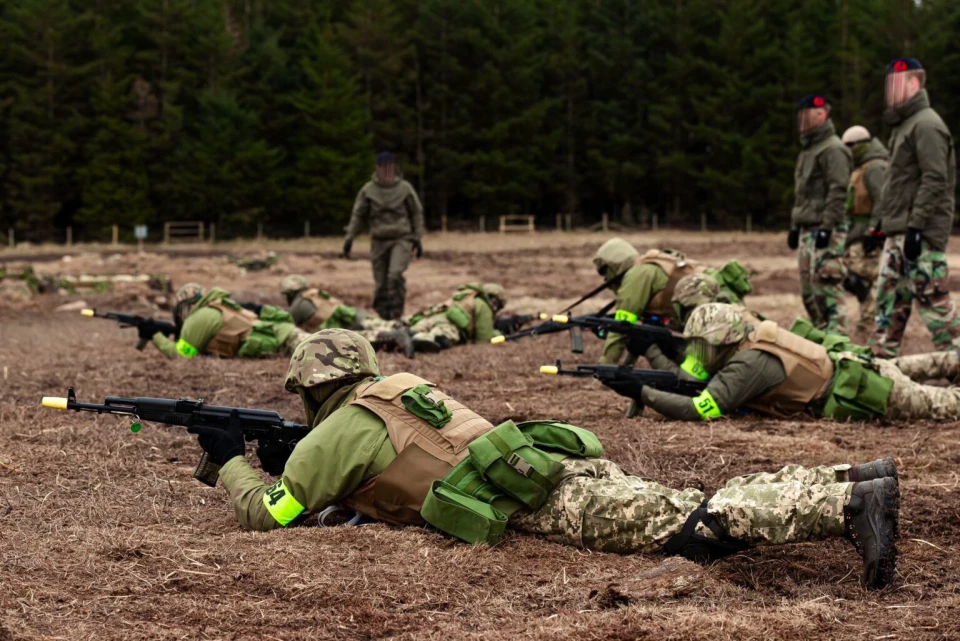
The North Atlantic Alliance is a military defense bloc, and for a common vision of defense, certain military standardization is needed. Like any large structure, the Alliance requires the development of common documents that enable its operation and allow the armies of member countries to act cohesively. This is achieved through the so-called NATO standards.
Over nearly 65 years, the Alliance has developed nearly 1,200 different standards, including technical specifications, training procedures, communication standards, environmental standards, and much more. However, their main purpose is interoperability among the forces of different NATO member countries to ensure the cohesion and effectiveness of the Alliance's forces in responding to any threats to NATO member countries. However, this does not mean that all armies become identical. Internal peculiarities are preserved, but common standards are noticeable in general features. Thus, no one can compel a NATO member state to adopt absolutely all Alliance standards.
Since the early 2000s, Ukraine has been adopting NATO standards. However, significant progress in this regard was made after 2014. Before the full-scale war, in 2021, the Ministry of Defense and the Armed Forces of Ukraine had implemented approximately 300 NATO standards and documents. Despite the war, the Ukrainian Armed Forces continue to adopt and implement new NATO standards. Moreover, the war has accelerated this process, especially regarding weaponry. Essentially, the Ukrainian Armed Forces have transitioned to NATO weaponry, which also entails standards for its use and a range of other documents aimed at standardizing weaponry.
Countries within NATO have adopted 155mm weaponry as a universal standard. Before the full-scale war, the Ukrainian Armed Forces primarily used 152mm caliber weaponry (following Soviet tradition). However, Ukraine increasingly possesses weaponry that requires 155mm ammunition. This includes American howitzers such as the M777, French CAESAR, Swedish Archer, and others. Additionally, Ukraine now has hundreds of tanks from NATO countries, including German Leopards, British Challengers, and American Abrams. Similarly, armored vehicles, various air defense systems, missile systems, and soon F-16 fighter jets - all have been transferred from NATO member states' arsenals to the Ukrainian Armed Forces.
"Ukraine as a country and the Ukrainian Armed Forces have become members of NATO. De facto, but not de jure. Because we have the weapons and the understanding of how to use them... I am confident that in the near future we will become members of NATO de jure," said former Minister of Defense Oleksiy Reznikov at the beginning of 2023.
Regarding joint exercises, their history is even longer, stretching back to the early 1990s. Ukrainian forces not only learned from the experience but also participated in joint peacekeeping missions with NATO countries' armies. In addition, extensive annual military exercises were organized, including Orbital, Unifier, Rapid Trident, and Sea Breeze. With the onset of full-scale war, there was a pressing need to expand all existing and create new training programs for Ukrainian soldiers.
The main countries where Ukrainian military personnel are trained include the United Kingdom, Germany, Poland, the United States, France, Spain, and the Czech Republic. Although the list of countries where Ukrainian soldiers have undergone and can continue to undergo relevant courses contains dozens of states. Overall, in 2022, over 20,000 Ukrainian military personnel underwent training in 17 allied countries. Half of them are specialized professionals such as sappers, medics, divers, scouts, and others, while the other half are ordinary soldiers and assault troops. In 2023, this number quadrupled to approximately 80,000 individuals. In 2024, training programs continue to enhance the skills of our soldiers. Thus, since the beginning of the full-scale war, over 100,000 Ukrainian servicemen have spent several weeks abroad at NATO military bases, honing their skills and mastering new weapons.
When Ukraine will become a member of the Alliance
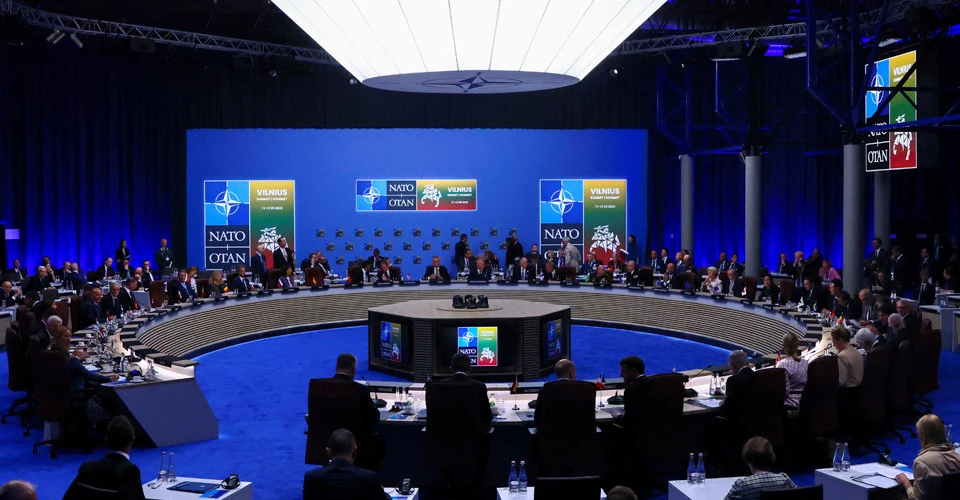
The Ukrainian government is actively pursuing a policy of closer alignment with NATO and reforming its armed forces in accordance with Alliance standards. However, the actual timing of Ukraine's accession to NATO remains the subject of political debates and negotiations at the international level, but no longer at the domestic level. Indeed, it is important to emphasize that within the country, the war with Russia has generated a consensus that Ukraine's future lies both in the EU and NATO.
At the end of 2023, NATO Secretary General Jens Stoltenberg once again reiterated the phrase about the possible time of Ukraine's accession to NATO, stating that it would happen after the war, and currently, it is impossible, so the Alliance will continue to help implement reforms to make the Ukrainian Armed Forces as close to NATO standards as possible. However, according to certain criteria, Ukrainian military personnel already surpass their Western counterparts, as they have honed their combat skills on real battlefields for 10 years. Therefore, in terms of combat readiness, the Ukrainian Armed Forces are definitely ahead of most NATO countries, and in the event of accession, they would significantly strengthen the Alliance. Accordingly, the main restraining factor remains the political will and consensus within the Alliance.
At the beginning of 2024, President Joe Biden of the United States stated that Ukraine has a future in NATO. And he did not doubt that. In response to questions about the timing of Ukraine's accession to NATO Biden said that Ukraine will become a member when all allies come to a consensus, and then they will be ready to welcome Ukraine into NATO.
Considering that the war is currently in an indefinite phase with no end in sight, it is not expected that Ukraine will be invited to join the Alliance at the NATO Summit in Washington (July 2024). This was confirmed by US State Department representative Daniel Sizek. According to the official, NATO has been strengthening in recent years, as evidenced by Finland's accession and Sweden's final stretch toward membership. However, Ukraine will not be able to follow in their footsteps as long as the war continues.
But let's suppose that by the end of the year, the war ends. Does this mean that Ukraine will become a new NATO member the very next day?
Let's say right away that no because we shouldn't forget about the second important condition - consensus within the Alliance. At least one country can definitely block our accession - Hungary, where pro-Russian Prime Minister Viktor Orban plays his political game and hinders almost all issues related to military assistance to Ukraine.
To better understand, the overall procedure for joining NATO has several key stages:
- Submission of application: The country wishing to join NATO first submits an official application expressing its desire to become a member of the alliance (Ukraine submitted its application in the fall of 2022);
- Criteria assessment: NATO verifies whether the country meets the criteria for accession. In addition to military standards, criteria such as democracy, stability, and the strength of the legal system are included, as well as the ability to engage in military cooperation (Ukraine has implemented a quarter of all NATO standards, but there is no requirement to implement all 100% of the standards. There are also no issues with military cooperation. More questions may arise regarding the rule of law and laws related to combating corruption);
- Action plan: If the country meets the criteria, NATO may develop an action plan containing recommendations and specific tasks for the country to prepare for membership (Ukraine was allowed to skip this step to expedite the process. Although we sought to obtain a MAP with clear timelines for accession as early as 2008);
- Invitation to membership negotiations: The country is invited to membership negotiations, where details regarding the terms of joining the Alliance are discussed (Ukraine is expected to be invited after the end of the war. However, as the situation with Sweden shows, the negotiation period, during which the country agrees to all the conditions of accession with each member of the bloc, who approves this decision, for example, in parliament, can last from several months to several years);
- Ratification of the agreement: After reaching an agreement in the negotiations, the country must ratify the agreements by national legislation (Ukraine's desire to join NATO is enshrined in the Constitution of Ukraine, and there is a consensus in Ukrainian society regarding this, so other possible legislative changes would not take much time);
- Formal acceptance: After ratification of the agreement, the country becomes an official member of NATO (Formal procedures that would officially make Ukraine the 33rd member of the Alliance, if Sweden is admitted to NATO this year).
In summary, since declaring independence, Ukraine has been engaging in dialogue and cooperation with NATO. Over the past 20 years, Kyiv has made several attempts to become a member of the Alliance. The issue became particularly acute after the start of the Russian war in 2014. The full-scale war since 2022 accelerated the pace of the transition of the Armed Forces of Ukraine to NATO standards, especially in terms of weapons and military training. Among the member countries, there are many states ready to accept us into NATO (primarily the Baltic states and Poland), but the majority agree to this step only after the end of the war. From that moment, it may take approximately a year to achieve consensus with all members of the bloc for Ukraine to become a full member of NATO, not only de facto as it is now, but also de jure.
- It should be noted that NATO Secretary General Jens Stoltenberg stated on the second anniversary of the full-scale war that Russian President Vladimir Putin started the war because he wanted to close the door to NATO for Ukraine, but achieved the opposite: "Ukraine is now closer to NATO than ever before."
- News





